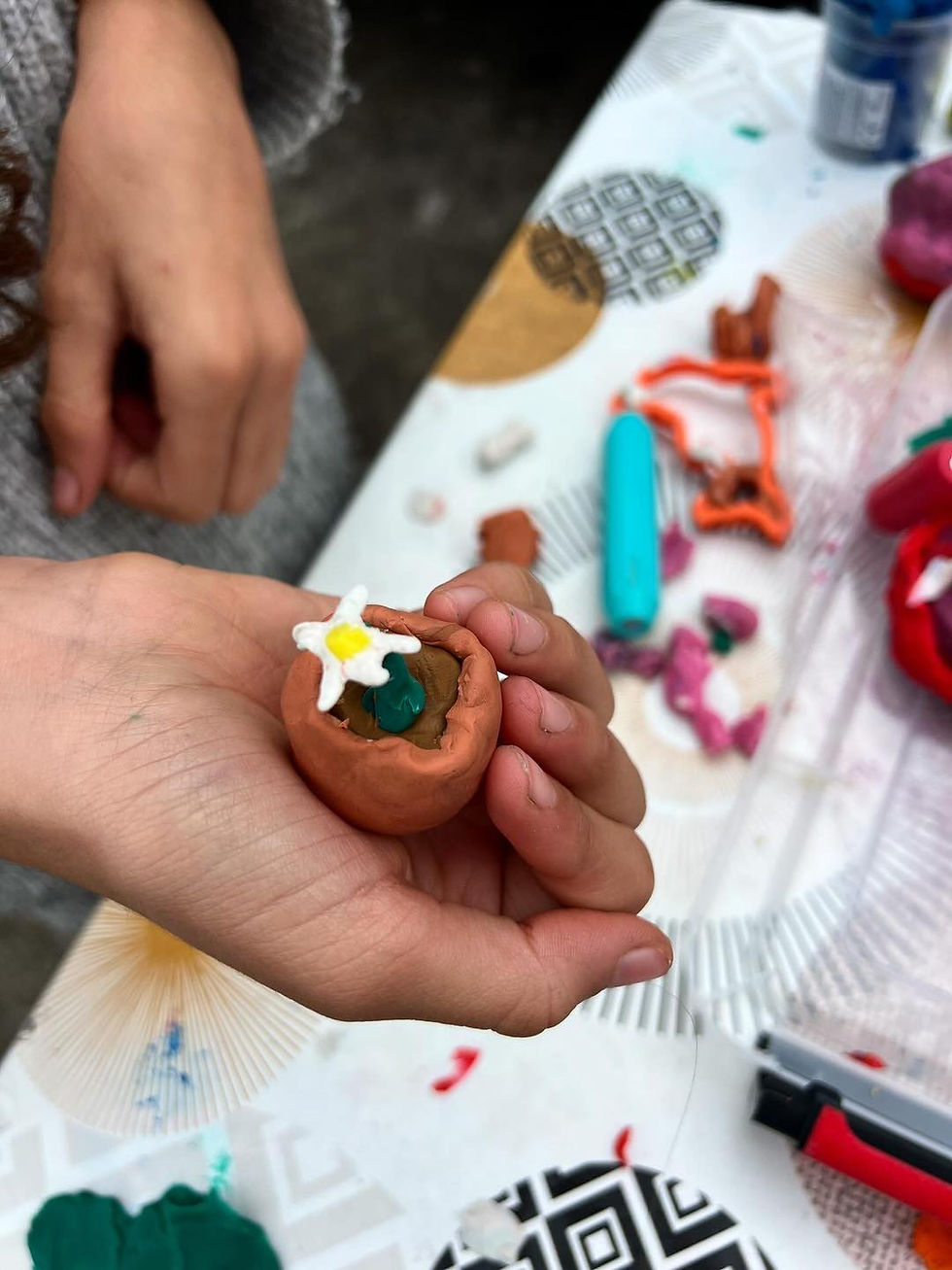“FIRE” - JANUARY 2023
- Art Refuge

- Jan 14, 2023
- 3 min read
We are delighted to share ANOTHER DISPATCH FROM CALAIS from longterm volunteer Alex Holmes:
‘Fire. ‘BMX’, the Eritrean camp, Calais. Minus 6 degrees. The mud is a frozen cross hatch of foot prints; humans, birds, rats. Fireside, the flames offer some comfort from the bitter cold. Saare places small cartons of milk in the orange embers and, once heated, they’re passed around the fireside circle. A charred-black kettle balances precariously on the burning timbers; soon there'll be sweet, warming tea. Nights; plastic jerry cans filled with hot water, two sleeping bags apiece plus blankets make the long freezing hours bearable.
Fire. Over the space of twenty-four hours the temperature has risen by 15 degrees and with the change comes relentless rain. The logs are sodden. Paper handkerchiefs, plastic bags, cooking oil; all are needed to combust the wet wood. At last the wood catches but to keep it burning requires the regular addition of plastic. Acrid black smoke swirls downwind. Saare pokes the melting jerry can, draws his poker upwards and creates a string of plastic spaghetti which he loops into the shape of a heart. Upwind a pallet is wedged against two chairs, a buffer against the strong wind. Aaron takes a burning timber from the fire and holds it close to his wet shoes in an attempt to dry them. Teodros places two tins of lentils beside the fire, takes off his shoes and socks and delicately resting a heel on each tin, he warms his feet
Fire. La Gymnase Gauguin Matisse is just minutes from BMX. The five fire-coloured dancers in Matisse’s 1910 painting ‘La Danse’ are a glorious evocation of life, of energy, of communion. It’s a painting that captures the essence of fireside life in the Eritrean camp. As the bitter wind chills, there’s chicken in a pan on the fire. ‘Tell me when ten minutes have passed, Mr Chef says it needs ten more minutes’. Music is playing on someone’s phone, Eritrean singer Bereket Mesele. Abel gets to his feet and begins an animated dance, his arms raised high in the air. A new energy pulsates around the fireside.
Fire. Gauguin arrived in Tahiti in 1891 to experience Tahitian tribal art and pagan religion only to discover that the French colonisers had suppressed the native traditions that fascinated hm. So he set out to recreate in his painting what had been destroyed. Upa Upa was his first attempt "to recover a trace of this so distant, so mysterious past; to rediscover the ancient hearth, to revive the fire amidst all these ashes." Having no knowledge of it, he expressed it through flames and dancing.
Fire. A brilliance of enlivening energy. But fire burns. Mikaele carries a flaming plastic jerry can from one fire to start another. His fingers are a patchwork of burnt flesh. Filimon’s fire-burnt wrist is marked by a swathe of pink scar tissue. Fire too is metaphor. Fire is the colonial trope that Gauguin encountered 130 years ago; the colonial trope is to control, to negate, to dehumanise. Today it is mirrored in the dehumanising refugee projects of so many former colonial powers. The UK government’s proposal to offshore asylum seekers, to foist its responsibilities under international law onto a third world country, Rwanda, is steeped in this mentality. Rwanda: the ‘R’ word. It seers into the psyche of those around the fire who dream still of reaching the UK. It is the flame that harms, that burns, the very antithesis of the warming, welcoming hearth.
Fire. ‘It’s now ten years since I was at home in my village in Eritrea’, says Girma. ‘We always had a fire outside our house. It was beautiful. On one side there were sheep, on the other, cows, and children playing everywhere. We drank coffee and chatted around the fire’. Dark is falling fast; the flames light up Girma’s face which breaks into a smile. ‘Calais life is hard but I am always happy. I am happy because God is my power.’ He pauses, his smile widening. ‘God is my fire!’ His eyes sparkle.’
All names have been changed.







Comments